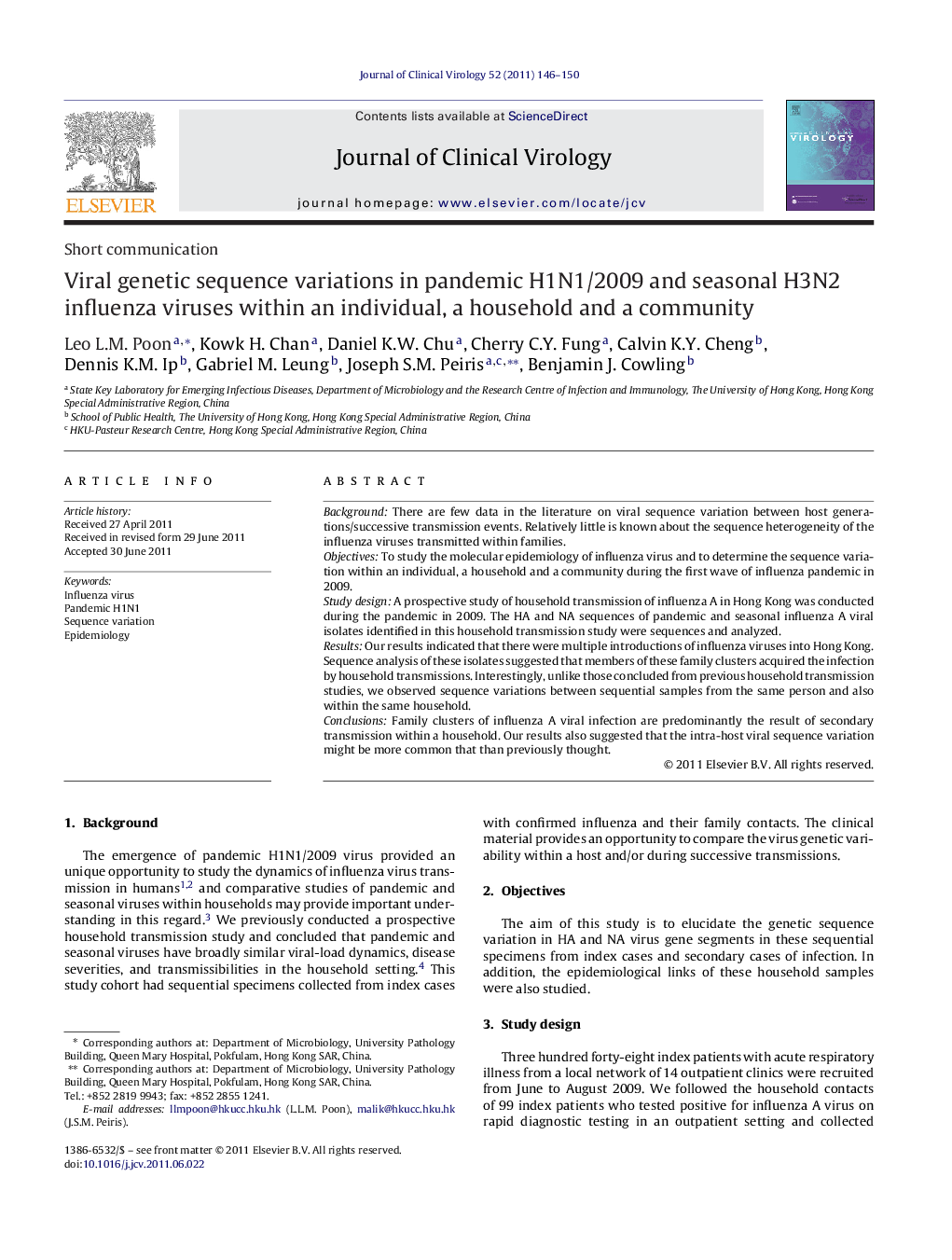| کد مقاله | کد نشریه | سال انتشار | مقاله انگلیسی | نسخه تمام متن |
|---|---|---|---|---|
| 3369087 | 1219006 | 2011 | 5 صفحه PDF | دانلود رایگان |

BackgroundThere are few data in the literature on viral sequence variation between host generations/successive transmission events. Relatively little is known about the sequence heterogeneity of the influenza viruses transmitted within families.ObjectivesTo study the molecular epidemiology of influenza virus and to determine the sequence variation within an individual, a household and a community during the first wave of influenza pandemic in 2009.Study designA prospective study of household transmission of influenza A in Hong Kong was conducted during the pandemic in 2009. The HA and NA sequences of pandemic and seasonal influenza A viral isolates identified in this household transmission study were sequences and analyzed.ResultsOur results indicated that there were multiple introductions of influenza viruses into Hong Kong. Sequence analysis of these isolates suggested that members of these family clusters acquired the infection by household transmissions. Interestingly, unlike those concluded from previous household transmission studies, we observed sequence variations between sequential samples from the same person and also within the same household.ConclusionsFamily clusters of influenza A viral infection are predominantly the result of secondary transmission within a household. Our results also suggested that the intra-host viral sequence variation might be more common that than previously thought.
Journal: Journal of Clinical Virology - Volume 52, Issue 2, October 2011, Pages 146–150